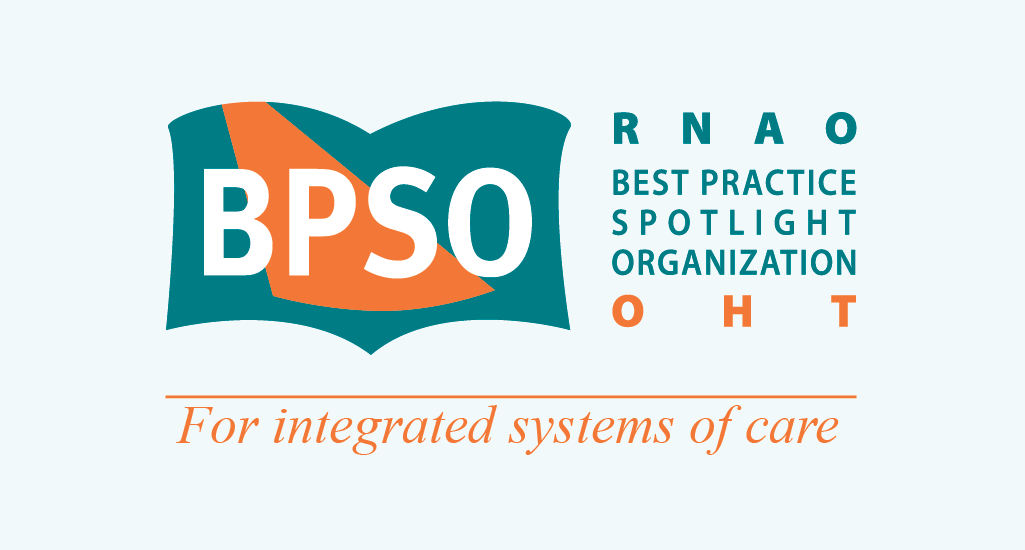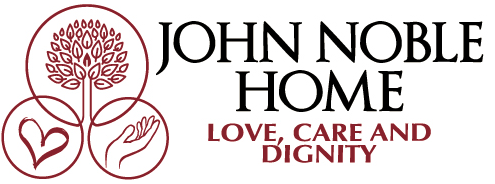By: Sue Bailey, RN, MHScN, GNC(C) (retired) and Deirdre Boyle, RN, BScN, LTC best practice co-ordinators

RNAO’s Best Practice Spotlight Organization (BPSO) program was launched as a key knowledge translation strategy in 2003 that supports guideline implementation, rapid learning, and evidence-based practice sustainability at the individual, organizational and health system levels to optimize clinical and health outcomes. This program was adapted in 2014 to the context and needs of the long-term care (LTC) sector. To date, more than 100 Ontario LTC homes are engaged as LTC-BPSOs.
Health system transformation in Ontario has as a foundation the development of Ontario Health Teams (OHT), which are groups of health-care providers and organizations that are clinically and fiscally accountable for delivering a full and co-ordinated continuum of care to a defined geographic population. RNAO’s webinars on health system transformation can be accessed here. To learn more about OHTs, visit the ministry of health information website.
RNAO is supporting the success of OHTs by offering a new BPSO model called BPSO-OHT. Currently, there are four OHTs participating in this program: North Western Toronto, East Toronto Health Partners, Southlake Community, and Ottawa East Health Team/ Équipe Santé Ottawa Est. This BPSO-OHT model is designed to support OHTs across the continuum of care to achieve the quadruple aim (improved patient outcomes, improved patient experience, lower costs of care, and improved provider experience). The goal of the BPSO-OHT model is to optimize patient outcomes through evidence-based practice and robust staff engagement, including all disciplines and all sectors.
Several RNAO LTC-BPSOs are key partners in the first round of OHTs that were announced in late 2019, as well as part of the OHTs that are ‘in development.’ They are contributing their knowledge of evidence-based practices and LTC expertise to health-care partners across the continuum of care, to the benefit of their residents and communities. Here are the experiences of two LTC-BPSOs as they work with community partners in North York and Brantford.

Villa Colombo in North York began its BPSO three-year pre-designate period in 2018. It has a long tradition of establishing connections with community partners, and was well-positioned to join the North Western Toronto OHT in 2019. The North Western Toronto OHT was approved as an OHT in December, and is also the inaugural BPSO-OHT. In this context, Villa Colombo has committed to becoming a designated LTC-BPSO, with the implementation and evaluation of evidence-based practices related to pain management, end-of-life care, restraint reduction and elder-abuse prevention. It has engaged staff, residents and families as it has established an evidence-based practice culture. Its involvement with the North Western Toronto BPSO-OHT will expand this work, and result in a contribution to the integration of guidelines across sectors, with the focus on person- and family-centred care, care transitions, as well as the prevention of falls and pressure injuries. Villa Colombo’s participation in both the LTC-BPSO program and the BPSO-OHT initiative provides the opportunity to fulfill BPSO requirements as an individual organization and as part of a collective. Villa Colombo will also experience the synergy and engagement achieved through working with partners in other health-care sectors.

The John Noble Home in Brantford also became an LTC-BPSO pre-designate in 2018. It is part of the Brantford Brant OHT, an OHT in development. RNAO LTC best practice co-ordinator Deirdre Boyle had the opportunity to speak with the home’s administrator, Jennifer Miller, about bringing BPSO knowledge into the OHT system. Miller finds this opportunity shapes the development of local care transformation and vision for the future. Long-term care could easily be overlooked in the evolution of a new system, but involvement in the OHT initiative enables the voice of long-term care to be heard.
The John Noble Home is an anchor/founding member and sits on the OHT executive leadership team. Miller chairs the Brant Long-Term Care Administrators’ Network, an affiliate of the OHT. This network is working to position its members on various OHT committees to ensure a diversified long-term care perspective is shared. Certain members of the Brant LTC Network sit on the Operations Management Group, the Mental Health and Addictions working group, and the Dementia working group.
Change is underway as OHTs are created across the province. Long-term care homes that are involved as LTC-BPSOs are well-positioned to bring the voice of long-term care and a focus on resident-centred care to the table and to help shape health-system transformation.
